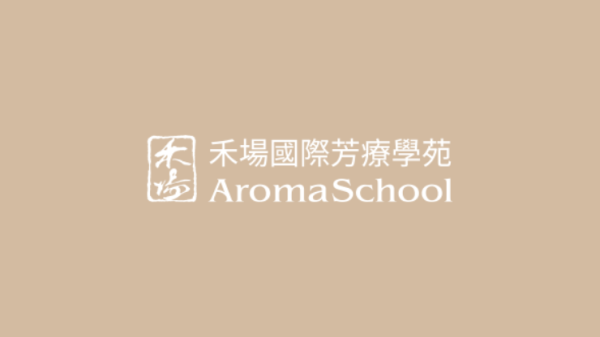什麼是創傷?
創傷在心理學上被定義為個體在經歷壓倒性事件後,身體無法正常調節或釋放反應的狀態。這可能表現為兩種極端:一是過度覺醒(如焦躁、易怒、警覺過高),二是能量喪失(如麻木、低落、解離)。若長期持續,可能被診斷為創傷後壓力症候群(PTSD)。治療方式包括藥物、認知行為治療(CBT)、眼動減敏重處理(EMDR)等。
創傷療癒的輔助工具
無論是否接受臨床診斷,許多人尋求非藥物性支持,如瑜伽、正念、身體療法、營養補充與植物醫學等。芳香療法在這些整合療法中扮演重要角色,不僅能單獨應用,也能加乘其他療癒方式的效果。氣味能直接影響杏仁核的記憶與戰或逃反應,透過香氣刺激,能喚起平靜與安全的情緒記憶。
草本精油在創傷療癒中的角色
草本類精油常被忽略,但其對神經系統的調節作用深具潛力。芳香療法師傳統上偏好柑橘或花香精油以安撫情緒,但對部分人而言這些氣味並不合適。此時,香茅屬(Cymbopogon)植物精油,如檸檬香茅、爪哇香茅、芳樟草與岩蘭草,提供了更多選擇。
檸檬香茅(Cymbopogon flexuosus):提振與澄清
檸檬香茅原產於亞洲,氣味明亮、清新且具草本酸甜調,能提振精神、清晰思緒。其主要成分為香葉醛(citral,包括 neral 與 geranial),具有鎮靜與抗焦慮作用。一項吸入研究顯示,香葉醛可顯著降低焦慮水準。其精油需稀釋至 0.7% 使用,以避免皮膚敏感,孕婦與幼兒應謹慎使用。
爪哇香茅(Cymbopogon winterianus):放鬆與保護
爪哇香茅氣味偏甜,帶有玫瑰與強烈柑橘調,主要含有香茅醇(citronellol)、香茅醛(citronellal)與玫瑰醇(geraniol)。研究顯示,這些成分能放鬆神經系統並具有神經保護作用。其安撫與澄清特性特別有助於緩解腦霧與情緒過載。成人建議稀釋濃度不超過 18.2%。
芳樟草(Cymbopogon martinii var. motia):平衡與調和
芳樟草為芳香草本,香氣柔和似玫瑰,主要成分為玫瑰醇(geraniol)與乙酸玫瑰酯(geranyl ACetate)。其精油具抗發炎與免疫調節作用,可幫助緩解長期壓力造成的慢性發炎反應。研究顯示,芳樟草能促進抗發炎細胞激素生成。其精油被視為安全,但建議最高稀釋濃度為 6.5%。
岩蘭草(Chrysopogon zizanioides):穩定與紮根
岩蘭草是氣味濃郁的根部精油,帶有泥土與木質氣息,被譽為「大地之香」。含豐富倍半萜烯與酮類,具安神、抗焦慮與鎮靜作用。低劑量可維持專注,高劑量則具有鎮靜效果。其精油適用於焦慮、反覆思考、失眠與能量失衡者。建議稀釋濃度不超過 15%。
參考資料
- Martin, A. et al. (2021). Treatment Guidelines for PTSD: A Systematic Review. *Journal of Clinical Medicine*, 10(18), 4175. https://doi.org/10.3390/jcm10184175
- Sornborger, J. et al. (2017). Integrative Therapy ApproAChes for PTSD. *Focus (American Psychiatric Publishing)*, 15(4), 390–398. https://doi.org/10.1176/appi.focus.20170026
- Herz, R. S. (2016). The Role of Odor-Evoked Memory in Psychological and Physiological Health. *Brain Sciences*, 6(3), 22. https://doi.org/10.3390/brainsci6030022
- Masuo, Y. et al. (2021). Smell and Stress Response in the Brain. *Molecules*, 26(9), 2571. https://doi.org/10.3390/molecules26092571
- Holmes, P., & Camp, M. (2016). *Aromatica: A Clinical Guide to Essential Oil Therapeutics (Vol. 1)*. Singing Dragon.
- Pei, S. et al. (2024). Exploring the Physiological Response Differences of β-caryophyllene, Linalool and Citral Inhalation. *Heliyon*, 10(19), e38941. https://doi.org/10.1016/j.heliyon.2024.e38941
- Tisserand, R., Young, R., & Williamson, E. M. (2014). *Essential Oil Safety (2nd ed.)*. Churchill Livingstone.
- Sayowan, W. et al. (2012). The Harmonizing Effects of Citronella Oil on Mood States and Brain ACtivities. *Journal of Health Research*, 26(2), 69–75.
- Bagheri, S. et al. (2022). Neuroprotective Effect of Geraniol on Neurological Disorders. *Molecular Biology Reports*, 49(11), 10865–10874. https://doi.org/10.1007/s11033-022-07755-w
- MurbACh Teles Andrade, B. F. et al. (2014). Cymbopogon martinii Essential Oil and Geraniol Exerted Immunomodulatory/Anti-Inflammatory Effects. *Journal of PharmACy and PharmACology*, 66(10), 1491–1496. https://doi.org/10.1111/jphp.12278
- Lunz, K., & Stappen, I. (2021). BACk to the Roots: BioACtivity of Root-Essential Oils. *Molecules*, 26(11), 3155. https://doi.org/10.3390/molecules26113155


